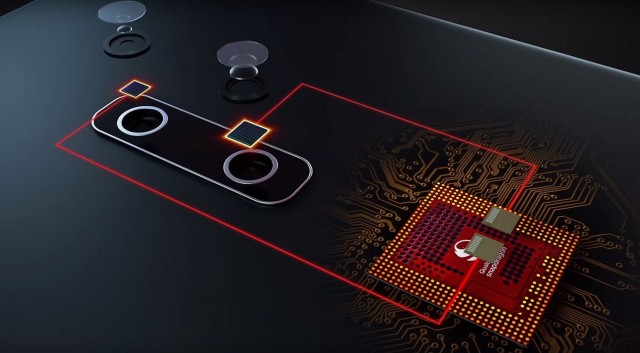From 2012 to 2014, Qualcomm was dominating a significant portion of the smartphone SoC market, holding 42% of it by Q3 2014. With introduction of the new SoC, the company hopes to get back up there.

Built on Samsung’s second-generation 14nm technology (14 LLP), the Snapdragon 820 is made of a 64-bit Kryo CPU quad-core and Adreno 530 GPU; it supports OpenGL ES 3.1+ and OpenCL 2.0 Full. Qualcomm suggests using its DSP and GPU as offloads to improve overall CPU efficiency. The company states that the 820 also consumes 30 percent less power than the 810 and is 40 percent faster than the 810’s graphics, making it ideal for VR.
It delivers LTE speeds up to 600 Mbps and supports 802.11ad Wi-Fi and will use machine learning to fight malware on devices. The new chip’s faster processing and enhanced power efficiency also contributes to increased battery life.

Earlier this year, Qualcomm unveiled Sense ID, its ultrasonic fingerprint identification. Unlike the fingerprint ID we are used to on smartphones, Sense ID is not affected by the sweat on your fingers or debris and the sensor can be embedded in metal, glass, and other surfaces, allowing it to integrated anywhere on your phone. When tested, Sense ID worked as efficiently as Apple’s Touch ID; even a bit of dirt didn’t slow it down.
While several devices are adopting the 802.11ac, Qualcomm is preparing the Snapdragon 820 for the next standard, 802.11ad. With the new standard, its potential speeds can reach up to 5-6 Gbps in close range and tri-band connectivity within the 60GHz spectrum. For now, we’ll likely see speeds under a gigabit, but as we’re looking to stream things like 4K video in the future, we will see a need for higher bandwidth. Qualcomm informs us that 802.11ad routers will begin appearing next year, but as with most new Wi-Fi tech, you may want to wait a bit before investing.
Source: Engadget
Advertisement
Learn more about Electronic Products Magazine





